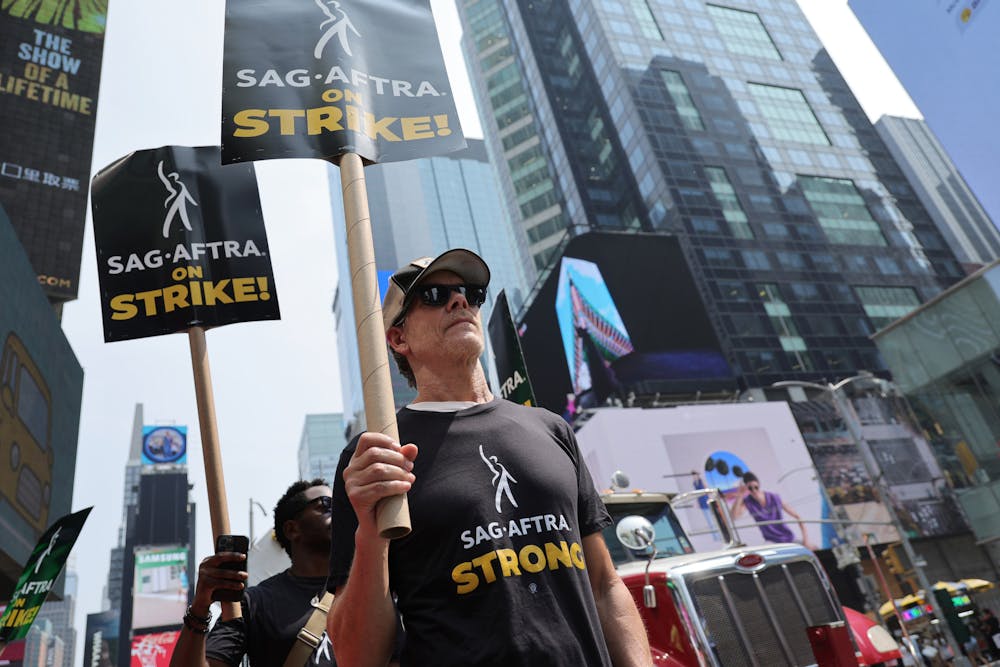Beginning on July 13, the Screen Actors Guild (SAG-AFTRA) is on strike, representing around 160,000 American film and television actors. Now, along with the Writers Guild of America (WGA), a huge section of Hollywood’s production pipeline is shut down.
But why exactly is such a large portion of the entertainment industry currently striking? It boils down to a cursed cocktail of corporate greed, artificial intelligence and a whole lot of pent-up resentment.
A major issue in the strike is residuals. In years past, writers and stars would get paid money each time their show was reused, like being reaired or released on DVD. This allowed for a passive income flow for workers in the most popular shows on air.
However, in the streaming era, these residuals are heavily reduced. “Gilmore Girls” actor Sean Gunn says that he sees very little residuals despite the show being highly popular on Netflix. Many stars are paid flat rates rather than per watch. Even if the show is topping streaming charts over and over, they’ll see pennies of that payout.
During the 2007 WGA strike, residuals were also an issue. Hollywood writers and actors today still don’t see proper residuals as the streaming space has rapidly evolved.
Another huge issue, as in the WGA’s current strike, is the proliferation of AI. There’s been a huge boom of computer-generated characters showing up with the likenesses of dead actors. One example that sparked online outrage was Christopher Reeve’s cameo in “The Flash” earlier this year, which was more the equivalent of a computer-generated puppet with his face painted on it.
For the WGA, writers have expressed doubts about software like ChatGPT being utilized to write film scripts for cheap. According to SAG-AFTRA, it’s even more dystopian for actors. According to the union, the Alliance of Motion Picture and Television Producers (AMPTP) proposed that actors could be scanned for one day’s pay and then have their likenesses used in scenes forever with no residuals to speak of.
AMPTP’s rebuttal — that their likenesses would only be used for the project they were scanned for — isn’t very comforting. Many people say that using face ID to unlock your phone is too intrusive. Now imagine a company having your entire body on file forever. Yikes.
The last time that the WGA and SAG — then without the AFTRA — struck together was in early 1960. After months of striking, the two unions gained historic outcomes, with both increasing residual payments and gaining pension and healthcare funds. Powerful things happen when workers unite in these ways.
While the unions are on strike, things will likely change in the industry. Film sets will shut down. Television seasons will be delayed. Depending on what stage of production it’s in, the movie or TV show you’re excited for could be delayed for months due to the strikes.
It’s important not to blame the actors or writers for these work stoppages. They want to keep acting and writing — they’ve spent their lives doing it. But if they can’t afford to live while doing it, something needs to change, and fast.
Without the dedicated people behind Hollywood, we wouldn’t have so much of the media we love. So maybe take a crack at that backlog of movies and TV shows in your watchlist while we all wait this out.






